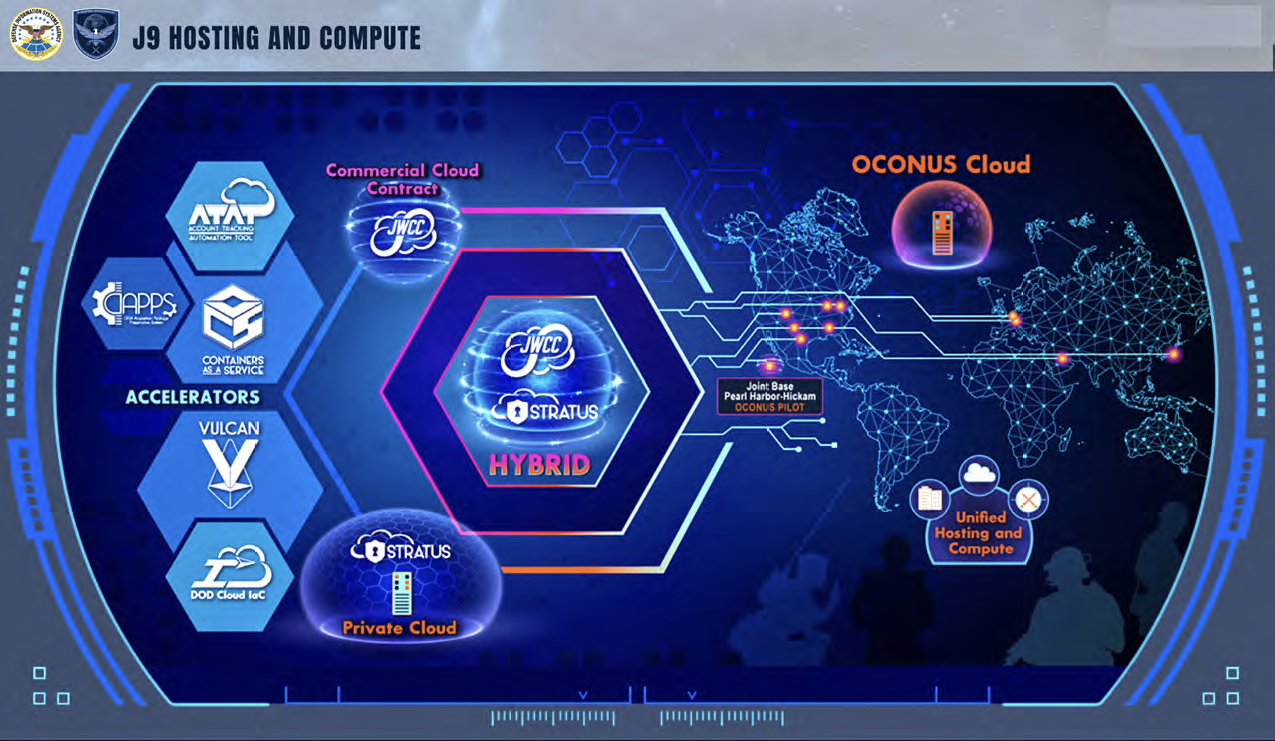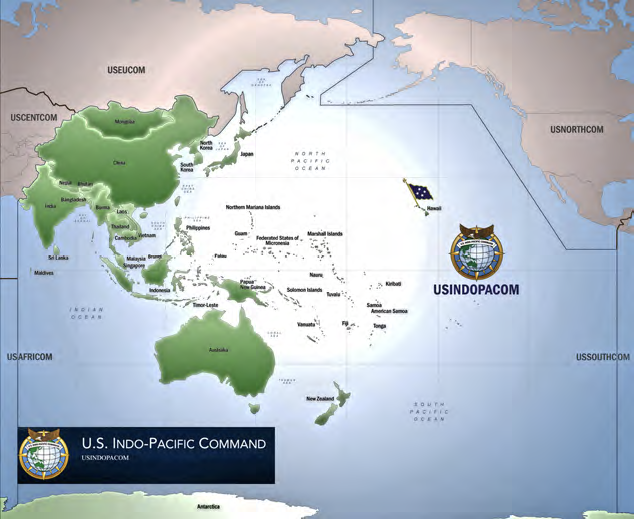Marco A. Villasana Jr., DISA Office of Strategic Communication and Public Affairs
The Defense Information Systems Agency is evolving cloud capabilities for Warfighters stationed outside the contiguous United States. Through OCONUS Cloud, DISA ensures mission-critical data is available where it’s needed most — at the operational edge.

This initiative aims to bridge the gap between cloud and edge computing, addressing the challenges of denied, degraded, intermittent and limited communications.
 “The biggest challenge for OCONUS Cloud adoption is simply understanding why you need to bring your data to the edge when it’s already in the cloud,” said Adam Ringel, DISA J-9 Hosting and Compute Directorate OCONUS Cloud user experience chief.
“The biggest challenge for OCONUS Cloud adoption is simply understanding why you need to bring your data to the edge when it’s already in the cloud,” said Adam Ringel, DISA J-9 Hosting and Compute Directorate OCONUS Cloud user experience chief.
“When you consider the Warfighter,” added Ringel. “We need to account for [denied, degraded, intermittent and limited communications] situations where transport to the commercial provider is not possible. That’s where the Joint Operational Edge Cloud (JOE) comes in, providing physical computing hardware at the edge to continue the mission.”
One piece of this evolution is Stratus, DISA’s private cloud. Now available in Hawaii, Japan and Europe, Stratus delivers a secure, scalable, multi-tenant platform designed to complement public cloud capabilities with a full authority to operate.
Mission partners can use Stratus to run applications requiring high bandwidth while leveraging the elasticity and resource pooling found in commercial clouds.
“Stratus is about giving mission partners options,” said Jeff Marshall, DISA J-9 Hosting and Compute Directorate acting director. “Some applications require data sovereignty or may not yet be ready for a public cloud. Stratus bridges that gap, providing private cloud capabilities within a DISA data center while offering a pathway to hybrid cloud solutions.”
On the other hand, JOE extends commercial cloud computing to operational edge locations, allowing mission partners to maintain continuity even in contested environments.
By bringing the commercial cloud to the edge with a more robust infrastructure than traditional tactical deployments, JOE aligns with the Department of Defense Chief Information Officer’s OCONUS Cloud Strategy, which envisions three tiers of deployment to the cloud: strategic, operational and tactical.
 Currently operational in INDOPACOM, with plans for expansion to other theaters in fiscal year 2025, JOE leverages AWS Outpost to deliver this capability.
Currently operational in INDOPACOM, with plans for expansion to other theaters in fiscal year 2025, JOE leverages AWS Outpost to deliver this capability.
As DISA continues to test and refine JOE, the agency invites military services and combatant commands to reach out and explore this innovative solution.

“The goal of JOE is to offer capabilities from all major providers — AWS, Microsoft, Oracle and Google — under the [Joint Warfighting Cloud Capability] contract,” Ringel explained. “These edge deployments will ensure that mission partners have the tools they need, no matter where they operate.”
DISA is also innovating through its Hybrid Cloud Broker Office, which connects mission partners with tailored solutions across public, private and on-premise environments.
 “We’re not just pushing products,” Marshall said. “We listen to mission partners’ challenges, turn those into requirements and deliver solutions that meet their needs from the start. This proactive approach accelerates adoption and ensures readiness.”
“We’re not just pushing products,” Marshall said. “We listen to mission partners’ challenges, turn those into requirements and deliver solutions that meet their needs from the start. This proactive approach accelerates adoption and ensures readiness.”
For Warfighters operating in the Indo-Pacific and beyond, these advancements mean faster access to critical data and reduced latency.
 “Data sovereignty is key,” Marshall said. “By bringing cloud solutions closer to the mission, whether in Hawaii, Japan or other locations, we’re enabling real-time decision-making with high resiliency.”
“Data sovereignty is key,” Marshall said. “By bringing cloud solutions closer to the mission, whether in Hawaii, Japan or other locations, we’re enabling real-time decision-making with high resiliency.”
Visit this direct link for more information on DISA’s hybrid cloud solutions.
www.disa.mil

